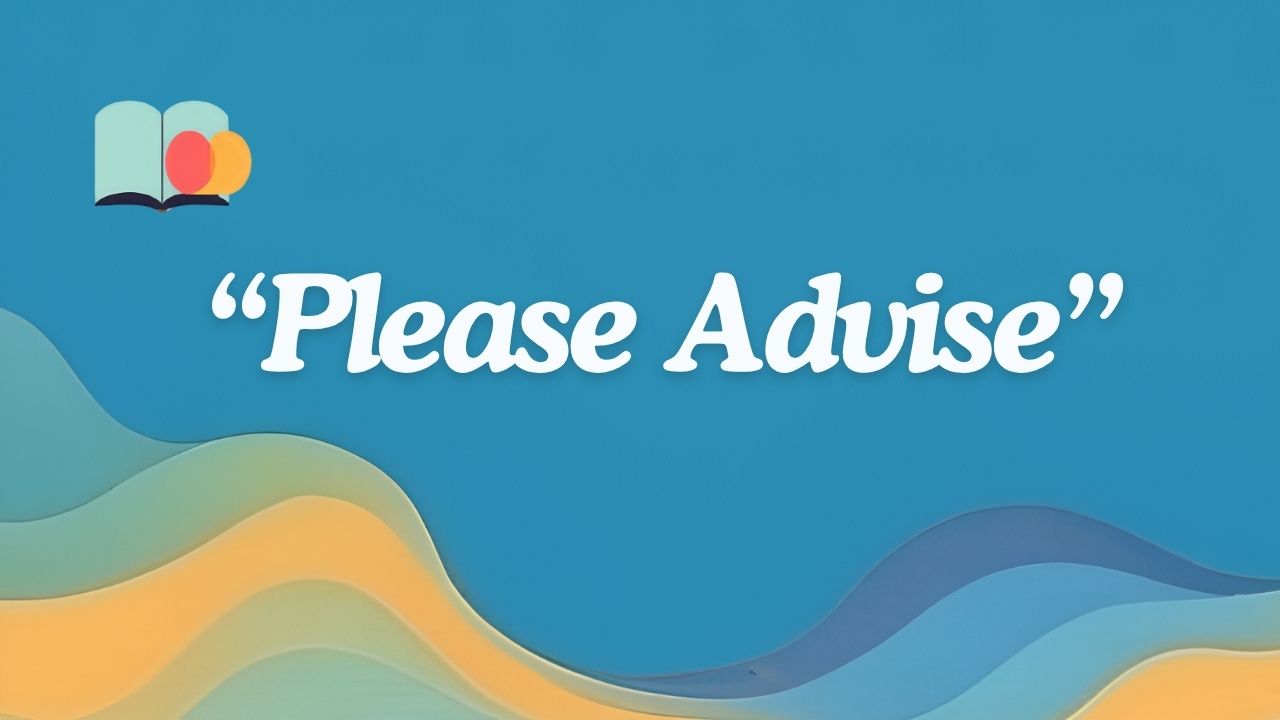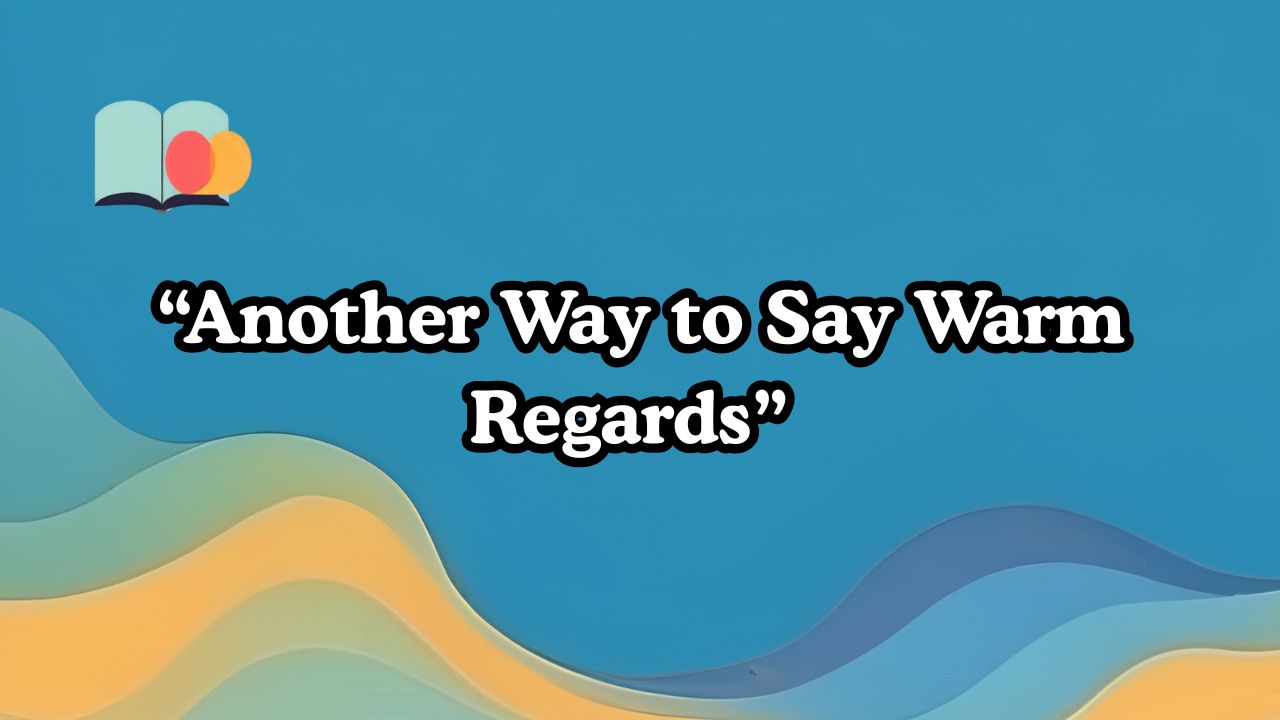Ever struggle to find the right words in emails or chats? Saying “please advise” is common but can feel too formal. Whether it’s for work emails or casual talks, having other ways to ask for help can make your messages better.
This guide has 55+ creative, polite, and professional phrases to say “please advise” in any situation. Here are some versatile options:
- Could you please share your thoughts?
- I’d appreciate your guidance.
- What’s your recommendation?
- Please let me know your input.
- Can you weigh in on this?
Keep reading for more phrases, examples, and tips to improve your communication!
Why Use Alternatives to “Please Advise”?
The phrase “please advise” is short but might seem too direct or formal at times. Using different phrases helps you:
- Match the tone to your audience (e.g., professional, friendly, or urgent).
- Avoid repetition in emails or reports.
- Build stronger connections through thoughtful wording.
This article sorts alternatives into professional, polite, and casual groups. It includes examples and tips to help you choose the right phrase.
Professional Alternatives to “Please Advise” for Emails and Work
When writing emails or reports, you want to sound polished and respectful. These professional phrases keep a formal tone while inviting feedback or guidance.
1. Could you please provide your input? [Professional]
- Example: I’ve outlined the project timeline. Could you please provide your input on the proposed deadlines?
- Best for: Emails to supervisors or colleagues.
2. I’d appreciate your guidance. [Professional]
- Example: The client has requested changes to the proposal. I’d appreciate your guidance on how to proceed.
- Best for: Formal requests to senior team members.
- Example: We’re reviewing the budget for Q4. Please share your recommendations by Friday.
- Best for: Strategic or planning discussions.
4. Can you offer your expertise? [Professional]
- Example: I’m unsure about the compliance requirements. Can you offer your expertise on this matter?
- Best for: Consulting specialists or experts.
5. What are your thoughts on this? [Professional]
- Example: The marketing team suggested a new campaign. What are your thoughts on this approach?
- Best for: Collaborative discussions.
6. Please let me know your advice. [Professional]
- Example: I’ve drafted the contract terms. Please let me know your advice before finalizing.
- Best for: Legal or contractual matters.
7. Could you weigh in on this? [Professional]
- Example: The data analysis shows conflicting trends. Could you weigh in on this before we present?
- Best for: Analytical or technical discussions.
8. I’d value your perspective. [Professional]
- Example: We’re considering two vendors. I’d value your perspective on which to choose.
- Best for: Decision-making scenarios.
9. Please provide your feedback. [Professional]
- Example: I’ve attached the report draft. Please provide your feedback by Wednesday.
- Best for: Document reviews.
10. Can you clarify the next steps? [Professional]
- Example: The client meeting raised some questions. Can you clarify the next steps?
- Best for: Post-meeting follow-ups.
💡 Expert Tip: In professional emails, pair these phrases with a clear context (e.g., “Regarding the budget issue”) to avoid sounding vague.
Polite Alternatives for Respectful Requests
These options are great for being nice, friendly, or showing respect. Use them when you meet someone new or talk to someone in charge.
- Example: I’m finalizing the event schedule. Could you kindly share your thoughts on the agenda?
- Best for: New or sensitive professional relationships.
12. I’d be grateful for your advice. [Polite]
- Example: I’m new to this process. I’d be grateful for your advice on how to proceed.
- Best for: Asking for help as a junior team member.
13. Would you mind sharing your thoughts? [Polite]
- Example: The team is split on this decision. Would you mind sharing your thoughts?
- Best for: Collaborative or team settings.
14. Please let me know your suggestions. [Polite]
- Example: I’ve proposed a new workflow. Please let me know your suggestions for improvement.
- Best for: Process or workflow discussions.
15. Can you provide some guidance? [Polite]
- Example: I’m unsure about the formatting rules. Can you provide some guidance?
- Best for: Asking for clarification.
16. I’d appreciate your insights. [Polite]
- Example: The project scope has changed. I’d appreciate your insights on resource allocation.
- Best for: Complex or high-stakes projects.
17. Could you let me know your preference? [Polite]
- Example: We have two design options. Could you let me know your preference?
- Best for: Decision-making with clear options.
18. Please offer your perspective. [Polite]
- Example: The client feedback was mixed. Please offer your perspective on how to address it.
- Best for: Handling feedback or complaints.
19. Would you be able to advise? [Polite]
- Example: I’m preparing the presentation. Would you be able to advise on the key points?
- Best for: Specific task guidance.
20. I’d value your recommendations. [Polite]
- Example: We’re updating the training program. I’d value your recommendations for content.
- Best for: Educational or training contexts.
✅ Best For: Use polite alternatives when addressing someone in a higher position or when building rapport with new contacts.
Similar Posts
Casual Alternatives for Informal Settings
For less formal situations, like team chats or casual emails, these alternatives keep things friendly and approachable.
21. What’s your take on this? [Casual]
- Example: I’m thinking of tweaking the schedule. What’s your take on this?
- Best for: Team chats or informal emails.
22. Got any advice? [Casual]
- Example: I’m stuck on this design issue. Got any advice?
- Best for: Peer-to-peer conversations.
23. Can you give me a heads-up? [Casual]
- Example: Not sure which tool to use. Can you give me a heads-up?
- Best for: Quick clarifications.
24. What do you think? [Casual]
- Example: I’ve got two ideas for the campaign. What do you think?
- Best for: Brainstorming sessions.
25. Any suggestions? [Casual]
- Example: The event plan needs some tweaks. Any suggestions?
- Best for: Open-ended team input.
26. Can you point me in the right direction? [Casual]
- Example: I’m new to this software. Can you point me in the right direction?
- Best for: Learning new tools or processes.
27. What’s your advice? [Casual]
- Example: The client wants a faster turnaround. What’s your advice?
- Best for: Urgent but informal requests.
28. Got any thoughts? [Casual]
- Example: I’m revising the pitch deck. Got any thoughts?
- Best for: Creative or collaborative tasks.
29. Can you help me figure this out? [Casual]
- Example: The data’s confusing me. Can you help me figure this out?
- Best for: Problem-solving with peers.
30. What would you suggest? [Casual]
- Example: I’m planning the team outing. What would you suggest?
- Best for: Informal planning.
⚠️ Mistake to Avoid: Avoid casual phrases in formal emails to clients or executives, as they may seem unprofessional.
Specialized Alternatives for Specific Contexts
These phrases are tailored for unique situations, such as urgent requests, academic settings, or cross-cultural communication.
31. Please provide urgent guidance. [Urgent]
- Example: The deadline is tomorrow. Please provide urgent guidance on the revisions.
- Best for: Time-sensitive issues.
32. Could you recommend a course of action? [Formal/Strategic]
- Example: The project is at a stand-still. Could you recommend a course of action?
- Best for: High-level decision-making.
33. Please advise on the best approach. [Formal/Strategic]
- Example: We’re facing budget constraints. Please advise on the best approach.
- Best for: Financial or strategic planning.
34. Can you suggest a solution? [Problem-Solving]
- Example: The software keeps crashing. Can you suggest a solution?
- Best for: Technical issues.
35. I’d appreciate your direction. [Formal]
- Example: The team needs clarity on priorities. I’d appreciate your direction.
- Best for: Leadership guidance.
36. Please confirm the next steps. [Formal]
- Example: The meeting concluded with open items. Please confirm the next steps.
- Best for: Post-meeting follow-ups.
37. Could you guide me on this? [Polite]
- Example: I’m unfamiliar with the protocol. Could you guide me on this?
- Best for: New processes or rules.
38. What’s the best way forward? [Strategic]
- Example: The campaign isn’t performing. What’s the best way forward?
- Best for: Marketing or project pivots.
38. Could you advise on the next steps? [Formal]
- Example: The client has approved the draft. Could you advise on the next steps?
- Best for: Project milestones.
- Example: The legal terms are complex. Please share your expertise on this clause.
- Best for: Specialized knowledge requests.
Additional Alternatives for Variety
Here are more ways to say “please advise” to keep your communication fresh and engaging:
- Can you shed some light on this? [Casual]
- Please let me know your take. [Polite]
- What’s your input on this? [Professional]
- Could you offer some advice? [Polite]
- I’d love to hear your thoughts. [Casual]
- Please provide your suggestions. [Professional]
- Can you steer me in the right direction? [Casual]
- I’d appreciate your take on this. [Polite]
- What’s the next step you’d recommend? [Professional]
- Could you share your insights? [Formal]
- Please advise on how to move forward. [Formal]
- Can you give me some pointers? [Casual]
- I’d value your advice on this. [Polite]
- Please let me know your opinion. [Professional]
- What do you recommend? [Casual]
Phrase Comparison Table
| Tone | Phrase | Best Context |
|---|---|---|
| Professional | Could you provide your input? | Emails to supervisors |
| Polite | I’d be grateful for your advice. | New or sensitive relationships |
| Casual | What’s your take on this? | Team chats or informal emails |
| Urgent | Please provide urgent guidance. | Time-sensitive issues |
| Strategic | What’s the best way forward? | Project or campaign planning |
Usage Tips for Saying “Please Advise” Effectively
When to Use Formal Phrases
- Use professional or formal alternatives (e.g., “Could you provide your input?”) in emails to clients, executives, or external stakeholders.
- Pair with specific details to avoid confusion (e.g., “Please advise on the budget approval process”).
When to Use Polite Phrases
- Opt for polite phrases when addressing someone new or in a higher position.
- Example: “Would you mind giving your input?” softens the request and builds rapport.
When to Use Casual Phrases
- Use casual alternatives in internal team chats or with colleagues you know well.
- Example: “Got any advice?” works well in a Slack conversation.
Cultural Considerations
- In some cultures, direct requests like “please advise” may seem blunt. Use softer phrases like “Could you kindly share your thoughts?” in cross-cultural communication.
- Avoid overly casual phrases in cultures that value formality, such as Japan or Germany.
💡 Expert Tip: Always consider your audience’s communication style. A quick check of their past emails can hint at whether they prefer formal or casual phrasing.
FAQ:
What’s a more polite way to say “please advise”?
Try “Could you kindly share your thoughts?” or “I’d be grateful for your advice.” These soften the tone while remaining professional.
When should I avoid using “please advise”?
Avoid it in casual settings or when addressing someone senior, as it can sound abrupt. Use polite or context-specific alternatives instead.
Can I use these phrases in non-work settings?
Yes! Casual phrases like “What’s your take?” work great in personal chats or informal group discussions.
How do I make my request sound urgent?
Use phrases like “Please provide urgent guidance” or “Could you advise as soon as possible?” to convey urgency politely.
What’s the best alternative for emails?
For professional emails, “Could you provide your input?” or “I’d appreciate your guidance” are polished and widely applicable.
Conclusion
Finding another way to say “please advise” can transform your communication. It makes it more engaging, polite, or professional depending on the context. With these 55+ alternatives, you can tailor your requests for emails, team chats, or urgent situations.
Whether you’re seeking input from a boss, collaborating with peers, or navigating cross-cultural communication, there’s a phrase here for you. Try experimenting with these options in your next email or conversation. Let us know in the comments which worked best for you! For more phrase ideas, explore Waystosay.org for creative communication tips.





